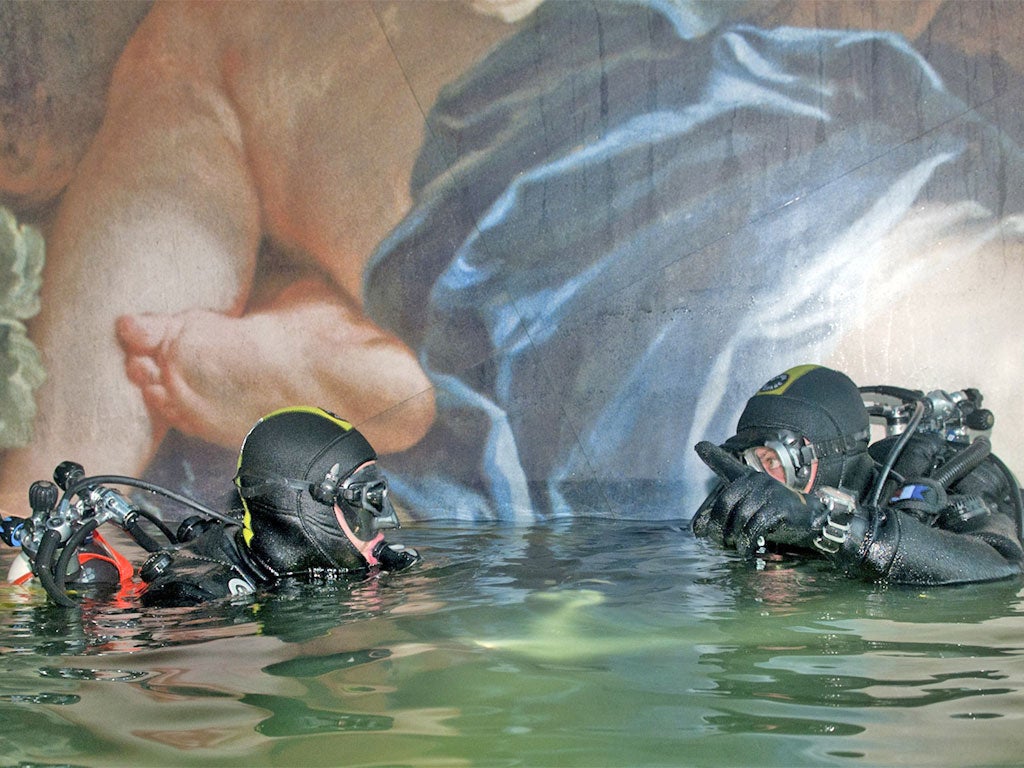Costa cruise hit rocks in 2005 – and firm tried to cover it up
Photographer claims company encouraged captains to take their ships close to shore

Your support helps us to tell the story
From reproductive rights to climate change to Big Tech, The Independent is on the ground when the story is developing. Whether it's investigating the financials of Elon Musk's pro-Trump PAC or producing our latest documentary, 'The A Word', which shines a light on the American women fighting for reproductive rights, we know how important it is to parse out the facts from the messaging.
At such a critical moment in US history, we need reporters on the ground. Your donation allows us to keep sending journalists to speak to both sides of the story.
The Independent is trusted by Americans across the entire political spectrum. And unlike many other quality news outlets, we choose not to lock Americans out of our reporting and analysis with paywalls. We believe quality journalism should be available to everyone, paid for by those who can afford it.
Your support makes all the difference.Italian magistrates will be asked to investigate claims that Costa Cruises, owner of the Concordia ocean liner which ran aground off the Italian coast 11 days ago, tried to cover up a similar incident in 2005, when their Fortuna vessel allegedly struck rocks near Sorrento.
Roberto Cappello, who was working as an official photographer for the company at the time, said that the Fortuna appeared to hit rocks during a close approach to the coast near the southern port in May 2005. He said photographs he took showing the listing cabins and damage to the vessel were confiscated by company officials. His allegations will this week be passed to magistrates investigating the Concordia disaster, in which 32 people are feared to have died.
Mr Cappello's claims came as divers recovered the bodies of two women from the capsized cruise liner, which is resting half-submerged near the port of Giglio island. That brings the number of bodies found to 15, with 17 others still missing. Experts are also expected to begin pumping fuel from the ship today in an effort to prevent an environmental disaster in the area.
Costa Cruises has insisted that close sail-bys of the type that ended in tragedy at Giglio on 13 January have never been endorsed by the company. But the Concordia captain, Francesco Schettino, who is accused of abandoning ship ahead of his passengers and could be charged with manslaughter, has told the preliminary investigations judge, Valeria Montesarchio, that Costa Cruises encouraged passenger-pleasing close approaches "at Sorrento, Capri and everywhere" to "create publicity".
The 2005 incident is said to have occurred on the Costa Fortuna liner that left Savona for Palermo on the 24 April. "The incident happened on the first Friday of May," said Mr Cappello. "It was early in the evening, about 7pm. I was in my cabin. We were close, very close to the shore – about 200 metres – when we hit. There was a loud bang. At first I didn't know that the ship had hit rocks. The first thing we were aware of was the ship listing from left to right. Elsewhere on the ship I saw that plates had fallen from tables. People were obviously aware that something had happened and they were frightened but there wasn't an immediate explanation from officials."
He said the ship appeared to zig-zag in the water "like a snake", but carried on at a slower pace and docked in Palermo. "We were later told that the ship had hit a whale – really. You'd have laughed if the whole thing wasn't so serious and frightening," he said. Mr Cappello said that he went down into the keel where he saw and photographed a gash in the ship "the depth of arm and tens of metres long". He also saw that a propeller blade one the left side was broken.
"But when we disembarked, Costa Crociere (Cruises) officials made me hand over the files on my camera. I was basically threatened. They said that as someone on a contract with them I was obliged to hand over all the images in the camera or there would be trouble," he said, adding: "I believe the company knew about these close sail-bys and even encouraged them. But it's taken the deaths of many people for it to really be exposed."
Carlo Rienzi, president of the national consumer group Codacons, which is leading a class action against Costa Cruises, is sending Mr Cappello's claims to Francesco Verusio, the Grosseto prosecuting magistrate who is heading the criminal investigation.
A spokesman for Costa Cruises said that the company would not comment on any developments relating to the disaster during the judicial investigation.
Join our commenting forum
Join thought-provoking conversations, follow other Independent readers and see their replies
Comments